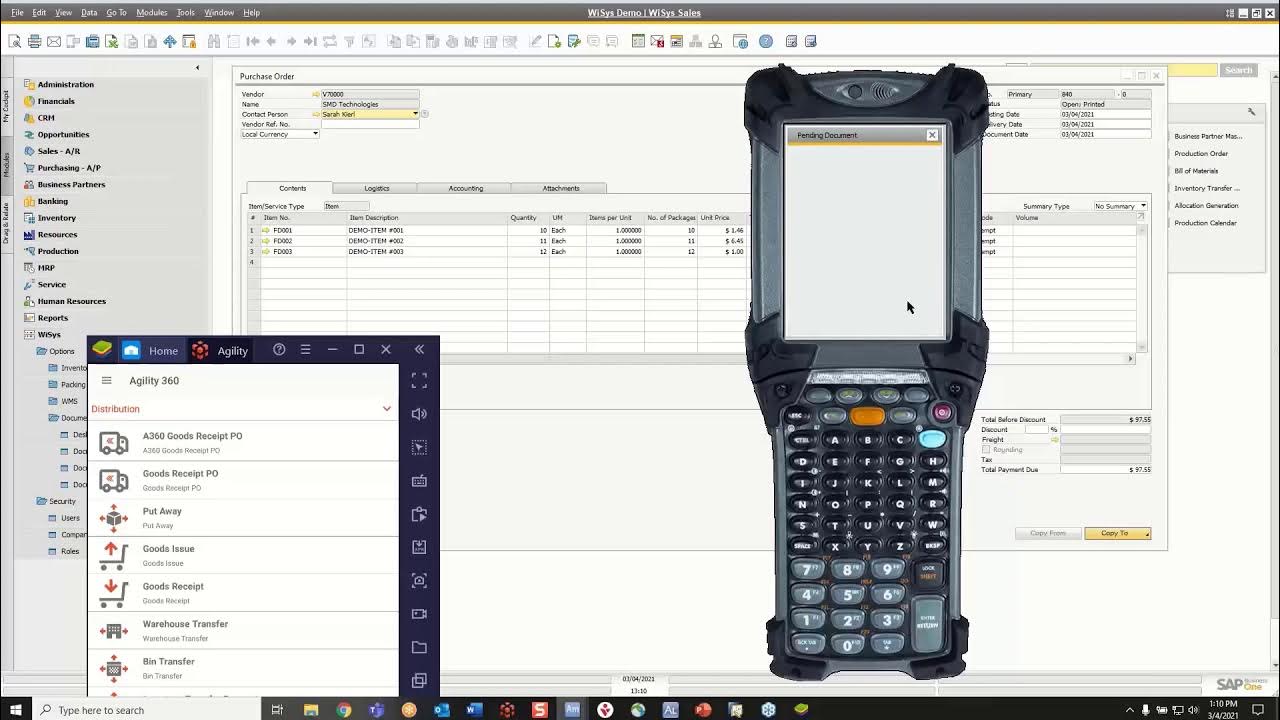Apple Business Manager Walkthrough and Demo - 2022/2023 Update
Summary
TLDRThis video provides a detailed walkthrough of Apple Business Manager's key features and functionalities, focusing on device management, payment and billing, and integration with Mobile Device Management (MDM) solutions. It explains how to configure MDM servers, integrate apps, and manage devices using tokens for automated enrollment. The tutorial also covers essential processes like Federation with existing identity providers, syncing users, and automating device assignments to specific MDM servers for efficiency. Practical tips and steps for seamless integration are shared, making the process easier for IT administrators.
Takeaways
- 😀 Apple Business Manager (ABM) integrates with Mobile Device Management (MDM) solutions for streamlined device and application management.
- 📱 Device enrollment in ABM requires synchronization with MDM servers, ensuring devices are correctly assigned for management.
- 💳 Payments and billing within ABM involve managing credit card information and vendor accounts for seamless transactions.
- 🔐 Active Directory Federation allows integration with identity providers like Google Workspace and Microsoft Azure AD for easier user management.
- 🔑 The token exchange process is crucial for linking ABM with MDM servers, involving downloading/uploading tokens for integration.
- 💼 Reseller IDs are essential for enrolling devices through resellers; failure to add them prevents device visibility in ABM.
- 🔄 MDM servers can be synchronized with ABM, with the ability to set up multiple MDM servers for different device management needs.
- ⚙️ Automated device assignment lets administrators automatically assign devices to specific MDM servers based on device type or OS.
- 💡 Federation with an IDP simplifies user synchronization into ABM, reducing the need for manual user management and enhancing security.
- 📊 ABM supports a variety of MDM servers, allowing flexibility in managing different types of devices and use cases within an organization.
- 🔧 Pro tip: Using default MDM server assignments automates device management and ensures that devices are directed to the right server without manual intervention.
Q & A
What is the first step in setting up Apple Business Manager (ABM)?
-The first step is to configure your billing and payment settings. This may involve linking a credit card or working with a reseller for alternative payment options if a credit card is not suitable for the organization.
What role does the Mobile Device Management (MDM) system play in Apple Business Manager?
-The MDM system is crucial for managing and deploying Apple devices. It needs to be integrated with Apple Business Manager for device syncing (Automated Device Enrollment) and for managing apps through the Apps and Books section.
How do you integrate an MDM with Apple Business Manager?
-You integrate an MDM with ABM by downloading a token from the ABM interface and uploading it into your MDM system. This token exchange ensures that the devices and applications sync properly between ABM and the MDM.
What is the purpose of Federation in Apple Business Manager?
-Federation allows you to connect your existing Identity Provider (IDP) like Google Workspace or Microsoft Azure AD with Apple Business Manager. This enables seamless directory synchronization, which helps manage users and devices more efficiently.
What are the benefits of federating your Active Directory with Apple Business Manager?
-Federating your Active Directory with ABM simplifies user management and device assignment by syncing users from your IDP directly into ABM. This ensures smoother operations for device enrollment and management.
Can multiple MDM servers be used with Apple Business Manager?
-Yes, Apple Business Manager allows you to set up multiple MDM servers. You can assign different servers to manage specific devices or groups of devices, such as iPads, Macs, or iPhones.
What is the process for adding an MDM server in Apple Business Manager?
-To add an MDM server, click the 'Add' button in the ABM interface, enter a name for the server, and upload the MDM token generated in the MDM system. This allows ABM to sync with the MDM for device management.
How do you automate the assignment of devices to MDM servers in Apple Business Manager?
-You can automate device assignments by setting default MDM server rules based on device types (e.g., all iPads to one MDM server). Once configured, devices will be automatically assigned to the correct server without manual intervention from the admin.
What is the significance of adding a reseller ID to the MDM server in ABM?
-Adding the reseller ID is essential because if you don’t associate the reseller ID with your ABM account, devices enrolled by that reseller won’t appear in your MDM system. It ensures that devices purchased through a reseller are properly linked to your ABM setup.
Can Apple Business Manager integrate with third-party MDM systems like Jamf or Workspace One?
-Yes, Apple Business Manager can integrate with various third-party MDM systems, such as Jamf, Workspace One, and Intune. This allows you to manage different device types and use cases under one unified platform.
Outlines

This section is available to paid users only. Please upgrade to access this part.
Upgrade NowMindmap

This section is available to paid users only. Please upgrade to access this part.
Upgrade NowKeywords

This section is available to paid users only. Please upgrade to access this part.
Upgrade NowHighlights

This section is available to paid users only. Please upgrade to access this part.
Upgrade NowTranscripts

This section is available to paid users only. Please upgrade to access this part.
Upgrade NowBrowse More Related Video

Introduction to WiSys Agility WMS for SAP Business One

What is MDM (Mobile Device Management)?

Mobile Device Connectivity - CompTIA A+ 220-1101 - 1.4

Exploring the New HPE Aruba Networking Central: A Comprehensive Walk-through

E-Commerce WebApp| Project Introduction | Part 01 | Spring Boot | Thymeleaf | Java

Best presentation ever by Steve Jobs
5.0 / 5 (0 votes)